Carrington event
description: a solar storm in 1859 that was the most powerful geomagnetic storm on record. It caused widespread electrical disruptions and is used as a benchmark for potential future events.
14 results
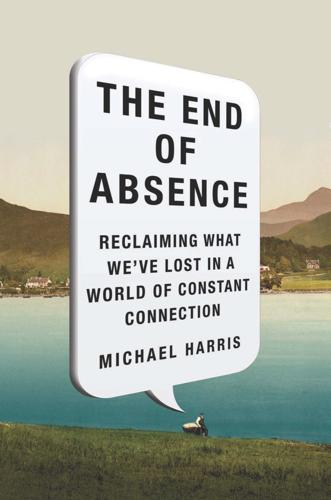
The End of Absence: Reclaiming What We've Lost in a World of Constant Connection
by
Michael Harris
Published 6 Aug 2014
Our own Machine has been similarly threatened before, though we were far less reliant on communication technologies then. On September 1, 1859, a storm on the surface of our usually benevolent sun released an enormous megaflare, a particle stream that hurtled our way at four million miles per hour. The Carrington Event (named for Richard Carrington, who saw the flare first) cast green and copper curtains of aurora borealis as far south as Cuba. By one report, the aurorae lit up so brightly in the Rocky Mountains that miners were woken from their sleep and, at one a.m., believed it was morning. The effect would be gorgeous, to be sure.
…
Frank, 94, 100 BBC World Service, 168 Beauvoir, Simone de, 176 Beethoven, Ludwig van, 203 Benjamin, Walter, 83, 100–101 Berners-Lee, Tim, 47, 152n Biderman, Noel, 175–76 Bieber, Justin, 90 Bill & Melinda Gates Foundation, 130 Blackmore, Susan, 42–44 Blendr, 173 Bloomberg, Mike, 90 BMW, 59 Boll, Uwe, 89 books, 12, 13, 20–21, 28, 33–34, 103, 115–18, 149 Google Books, 102–3 printing press, 11–13, 16, 20–21, 33–34, 43, 83, 98, 145n, 202 Unbound Publishing and, 88 see also reading Borges, Jorge Luis, 154 boyd, danah, 64n brain, 25, 27, 35, 36, 54, 118–19, 146, 193 of children, 36–40 Internet and, 37–38, 40, 142, 185 memory and, 139, 140, 142, 146, 151–53, 155, 158 multitasking and, 119, 121 orienting response in, 120, 121, 125 passive learning and, 39 plasticity of, 36–38, 47, 141, 159, 193 reading and, 33–34 synesthesia and, 62–63 techno burnout and, 10–11 Bregman, Peter, 127–28 Bryson, Lyman, 179 bullying, 53, 62–66 Todd and, 49–53 ByWard Market, 88 cabinets of curiosities, 147 Cain, Susan, 204 Capek, Karel, 56–57 Carr, Nicholas, 38, 86, 193 Carrington, Richard, 107 Carrington Event, 107–9 Carson, Anne, 198n Catholic Church, 12, 20 cell phones, see phones Chapdelaine, Morris, 171–72 Charles V, King, 99n Chatfield, Tom, 119 Chatroulette, 167–68 Chicago Sun-Times, 115 children, 25–41, 45–48 brains of, 36–40 iPad and, 26–27, 45 multitasking and, 27–28 phones and, 28–30 Chip Vivant, 61 Chopra, Aneesh, 65 Christian, Brian, 61 Chunyun, 209 Clay, Cynthia, 61 Clementi, Tyler, 63, 67 Cleverbot, 60 clocks, 98–99, 204 Cocteau, Jean, 17 Computer Power and Human Reason (Weizenbaum), 188 computers, 16–17, 29, 108, 120, 188 empathy in, 61, 62, 67 intelligence in, 56–57, 60, 65 memory in, 148, 149, 151, 152, 154–56 computing, affective, 61, 62, 67 confessions, 54, 66, 70, 71 Todd and, 50–52, 72 Conquest of Happiness, The (Russell), 195 continuous partial attention, 10 conversation, 25, 39, 194 Cooper, Anderson, 52, 63 cortisol, 10 CougarLife, 175 Coupland, Douglas, 184–87, 194, 197 Coursera, 95–96, 98, 100 Cowan, Nelson, 154–55, 160 cowbirds, 125 Craigslist, 165, 167, 174 Craven, Dave, 77–78 Cruel Intentions (Valmont), 166 Cult of the Amateur, The (Keen), 88 Danielson, Dennis, 157–59 Darwin, Charles, 41, 42 data mining, 82 Dateline, 52 dating, 164–83 Dawkins, Richard, 41, 42 daydreaming, 8, 47–48, 194, 205 De Beers, 101 “Defend the Web” (Berners-Lee), 152n Dennett, Daniel, 41 digital immigrants, 15–16, 205 distraction, 30, 36, 113–17, 121, 124–28, 133, 135, 194 Dinakar, Karthik, 62–67, 96 D’Mello, Sidney, 129–30 DragonLance series, 117 dudesnude, 165 Ebert, Roger, 115–18 Economic Journal, 87 education, 94, 96, 183 Coursera, 95–96, 98, 100 dematerialization of, 97 massive open online courses, 95–98 edX, 98 18 Minutes (Bregman), 127 Einstein, Albert, 151 Eisenstein, Elizabeth L., 12n, 83, 145n, 202 Eliot, T.
…
If it doesn’t happen soon, it’ll happen eventually. Great Britain’s Royal Academy of Engineering has pegged the chance of a Carrington-type event within the next two centuries at about a 95 percent probability. Such an event almost took place in the summer of 2012, actually, and involved a particle stream larger than we imagine the original Carrington Event to have been. But it just missed the earth, shooting harmlessly over our heads (over the top of a STEREO spacecraft, actually). When we are hit, at any rate, we won’t be able to save ourselves with some missile defense system meant for meteors; no missile could halt the wraithlike progress of a megaflare.

A City on Mars: Can We Settle Space, Should We Settle Space, and Have We Really Thought This Through?
by
Kelly Weinersmith
and
Zach Weinersmith
Published 6 Nov 2023
Current estimates say that once you leave Earth’s protective atmosphere and magnetosphere, every single cell nucleus in your body will be struck by a proton every few days, and by a larger charged particle every few months. Radiation Is Coming for Your Equipment Radiation can also mess with our technology. In 1859, our planet was hit by a solar particle event that became known as the Carrington Event, after British astronomer Richard Carrington. Records from August 28, 1859, all over America document the effects. In one Boston office at about 6:30 p.m., all the outgoing telegraph lines simply stopped working. In Pittsburgh, sudden currents in their electrical system compelled telegraph operators to disconnect the batteries; when they did, “streams of fire” and sparks jumped out.
…
See also Moon: lacks carbon carbon dioxide, 47, 139, 341 and biospheres, 183, 186 on Earth, 358 on ISS, 78, 298 on Mars, 139, 142–44 on Venus, 161 Carrington, Richard, 55 Carrington Event (1859), 55 Carter administration, 31 Case for Mars, The, 4–5 cement, 23–25 Chaffee, Roger, 49 Chernobyl, 58 Chicago Convention (1944), 236 children, in space with disabilities, 85–86 and ethics, 82, 85–86 and gravity, 77–78, 83–84 and mental health issues, 110 and radiation, 52, 80 raising of, 11, 77, 138, 188, 344 space medicine and, 77 See also babies, in space Chile, 282–84, 284, 285–86, 331 China, 2, 24, 277, 325, 367 collects lunar regolith, 250 destroys satellite, 50, 51, 241 leader in space travel, 252 lunar plans of, 14, 135, 263–64, 269 and private-property regime, 306 research in space, 182, 188, 384–85 rockets and, 220 space assets of, 361–62 and Space Race, 13–15, 232, 270–71 space stations of, 46 treaties and, 262, 268, 292 Yutu-2 rover of, 196 Clarke, Arthur C., 145 Cleave, Mary, 178 climate change, 16, 22, 32, 36, 137, 154, 369 Closed Ecology Experiment Facilities (CEEF) (Japan), 188–89 Cockell, Charles, 51, 387 Colbert, Stephen, 96 Cold War, 30, 167, 225, 231–32, 296 Collins, Eileen, 103–4 Collins, Michael, 104, 216 Colombian constitution, 10, 39 comets, 132 common heritage of mankind (CHM), 257–58, 259, 260–61, 290, 292, 303 commons Antarctica as, 279–80, 287–88 deep seabed as, 279–80, 289–90, 292 explanation of, 280–82 peacefully managed, 279–81 the sea as, 324 space as, 12–13, 255, 279, 294, 308, 323–26 company towns explanation of, 335–38 labor issues and, 336, 338, 340–47 on Mars, 333–34, 347 Russian “monotowns,” 337, 341, 344 for space settlements, 333–48 computer chips, 357 conservation biology, 351–54 Convention on the Regulation of Antarctic Mineral Resource Activities (CRAMRA), 287, 289 Cook, Frederick, 29 Cooper, John C., 239 Corner Brook, Newfoundland, 336–37 corporations, in space, 2, 9, 335–36, 344–47, 362 Cosmonautics Memorial Museum (Moscow), 44 cosmonauts, 48, 269 amusing names of, 378–79 anthem of, 382–83 candidates for, 94 day-to-day life of, 72, 96–97, 102, 178–79 first into space, 32, 43, 227 health of, 96–102, 104 length of time in space, 45, 98 training of, 50, 378 women, 32–33, 104 See also specific names Craters of Eternal Darkness (Moon), 128, 130, 131, 132–34, 291 Cristoforetti, Samantha, 55 Cuba, 227, 356 Cuban Missile Crisis, 230 cyberattacks, 362, 367–68 Cyprus, 320, 321 D Dark Skies: Space Expansionism, Planetary Geopolitics, and the Ends of Humanity (Deudney), 15, 388 Davis, Jan, 73 death, in space, 46–48, 50, 323 decolonization, 225, 316–17, 320–21 decompression sickness, 48 Defense Innovation Unit, 14 Deudney, Daniel, 15–16, 86, 376–77, 388 deuterium, 142 developing nations, 26, 260, 290, 292–93 disease, 123, 137, 223, 352, 354 Disney, 31, 222, 312–13 Dobrovolsky, Georgy, 48 Dolman, Everett, 232, 359 Draper, Charles Stark, 227 Duke, Charlie, 179 Dunstan, James, 244 E Eagle lander, 179 Earth death of, 22, 352, 356–58 deep gravity well of, 126, 149, 368 heavy objects thrown at, 8, 15, 145 homogenized, 16, 33–35 magnetosphere of, 54–55, 58, 68 more land needed for, 153–54 pathogens/parasites on, 84 returning to (from space), 84, 109–10, 140–41, 344 saving it, 2, 16–17 space “analogs” on, 105–7 space goods sold in, 124–25 Eating In: From the Field to the Kitchen in Biosphere 2 (Silverstone), 185, 190 ecology, 4, 358 closed-loop, 182–91 research needed on, 385–87 saving it, 17, 23–25 See also Biosphere 2 economics, in space advantages of, 2, 4 of asteroids, 159 exporting/selling of, 124–25, 141–42 and the Moon, 14, 141–42, 218, 269–70 won’t make us rich, 25–27 economy, in space, 155, 382 autarky/independence and, 22, 356–58, 367 and company towns, 343–46 dangers of, 334, 377 diversity for, 348 labor mobility and, 346–47 on Mars, 22, 348 on the Moon, 269 New Space Race and, 14 and transit times to space, 387 economy, on Earth, 17, 26, 159, 270 ecosystem building of, 182–83, 385 design of, 171–72, 185, 187 needed for food/clean air, 97 research needed on, 385 self-contained, 182–84 small-scale experiments of, 188–90 sustainability of, 189 Ehresmann, Manfred, 204 Ehricke, Krafft, 134 Eisenhower, Dwight D., 227, 235 elements on Mars, 142–44, 183, 208 on the Moon, 127–28, 183, 208 Elvis, Martin, 159, 246–47, 357, 388 emotion sensors, 90 Endeavor space shuttle, 73 energy, for space habitats, 143, 192 nuclear, 193, 195–97 nuclear fission reactors, 197–99, 209 and shielding, 203 solar, 193–95, 209 engineers, 35, 49, 219, 221, 224 environment, saving it, 18, 23–25, 154 environmental calamity, 17, 137, 358 degradation, 156–57, 292 monitoring, 376 movement, 153–54, 156–57 Escamilla, Mario, 330 ethics, 81–82, 85–87, 344, 355, 358, 385 Eu:CROPIS, 181–82 Europe, 154, 232, 292, 318, 325, 354, 368 European Space Agency, 13, 24, 181–82, 188, 269 exercise, 61–62, 77, 92 F FAA Commercial Space Astronaut Wings Program, 237 Fabio, 96, 140 famines, 17, 156–57 farming, in space.
…
Suffocation, Bone Loss, and Flying Pigs: The Science of Space Physiology For near-term efforts: Lina Tran, “How NASA Will Protect Astronauts from Space Radiation at the Moon,” NASA, August 7, 2019, https://www.nasa.gov/feature/goddard/2019/how-nasa-protects-astronauts-from-space-radiation-at-moon-mars-solar-cosmic-rays [inactive]. GO TO NOTE REFERENCE IN TEXT In 1859, our planet: Stuart Clark, The Sun Kings: The Unexpected Tragedy of Richard Carrington and the Tale of How Modern Astronomy Began (Princeton, NJ: Princeton University Press, 2007), 83–88. GO TO NOTE REFERENCE IN TEXT the words of one: Rod Pyle, Destination Mars: New Explorations of the Red Planet (Amherst, NY: Prometheus, 2012), 168. GO TO NOTE REFERENCE IN TEXT you’ve ever wanted: Jeffrey Chancellor et al., “Limitations in Predicting the Space Radiation Health Risk for Exploration Astronauts,” NPJ Microgravity 4 (2018): 7, https://doi.org/10.1038/s41526-018-0043-2.

Infinity in the Palm of Your Hand: Fifty Wonders That Reveal an Extraordinary Universe
by
Marcus Chown
Published 22 Apr 2019
KILLER SUN Once upon a time, people on Earth were electrocuted by a solar flare “If there is a solar flare or a nuclear war, a thousand cans of pickled turnips aren’t going to save you.” —SARAH LOTZ1 ACROSS THE WORLD, TELEGRAPH operators were electrocuted and, at low latitudes, a blood-red aurora borealis appeared, so bright a newspaper could be read by it at midnight.2 The Carrington event, named after amateur astronomer Richard Carrington, who from south of London noticed a flare on the sun at the same time that a magnetometer at Kew flew off-scale, changed forever our ideas about the sun.3 Before September 1, 1859, our local star was believed to influence the earth only through its gravity and of course the warming effect of sunlight.
…
The impact of the solar flare distorted the earth’s magnetic shield, so solar particles were no longer merely funnelled down at the poles but could reach anywhere on the planet. The collision of solar particles with atoms in the atmosphere caused those atoms to glow and create the aurora. 3. The Sun Kings: The Unexpected Tragedy of Richard Carrington and the Tale of How Modern Astronomy Began by Stuart Clark (Princeton University Press, 2009). 4. “A Scary 13th: 20 Years Ago, Earth was Blasted with a Massive Plume of Solar Plasma” by Adam Hadhazy (Scientific American, 13 March 2009: https://www.scientificamerican.com/article/geomagnetic-storm-march-13-1989-extreme-space-weather/). 17.
…
A more serious concern is Coronal Mass Ejections (CMEs), which should more accurately be called “coronal magnetic eruptions.” First recognized in the 1970s, these are missile-like ejections into space of vast amounts of solar plasma and magnetic fields. We are talking about something of roughly the mass of Mount Everest hurled into space at five hundred times the speed of a passenger jet. The Carrington event—the most violent solar event ever recorded—is now recognized to have been a CME. In 1859 the world was not dependent on electrical technology, so the CME caused no serious harm to civilization. Contrast this with the situation today. Changes in the magnetic field across electrical power grids can induce currents big enough to melt equipment.

Ten Billion Tomorrows: How Science Fiction Technology Became Reality and Shapes the Future
by
Brian Clegg
Published 8 Dec 2015
So much modern business depends on the Internet and other electronic communications, while our food supplies are strongly tied into the availability of electricity to keep things running and chilled. It would, at least in the short term, be like a return to the Dark Ages. Luckily, such catastrophic solar events don’t happen very often. The most recent recorded solar EMP that did make it to the Earth was the so-called Carrington event of 1859, named after British astronomer Richard Carrington, who witnessed the original flare on the Sun. Several powerful coronal mass ejections hit the Earth at pretty much the same time. Back then, of course, dependence on electrical devices was much lower than it is today, but the primitive electric telegraph lines of the time, sometimes called the Victorian Internet, had high currents induced in them, causing sparking, setting fire to some telegraph offices and bringing the whole network down.
…
Research showing improvement of memory consolidation during sleep with transcranial stimulation is Lisa Marshall, Matthias Mölle, Manfred Hallschmid, and Jan Born, “Transcranial Direct Current Stimulation During Sleep Improves Declarative Memory,” Journal of Neuroscience 24, no. 44 (November 3, 2004): 9985–92, doi: 10.1523/JNEUROSCI.2725-04.2004, accessed September 29, 2014 The figure of more than $2 trillion as the cost of another Carrington event is quoted in a NASA Science News piece, accessed July 30, 2014, science.nasa.gov/science-news/science-at-nasa/2014/02may_superstorm/. The use of high-altitude nuclear explosions to generate electromagnetic pulses (EMPs) is discussed in Edward Savage, James Gilbert, and William Radasky, The Early-Time (E1) High-Altitude Electromagnetic Pulse (HEMP) and Its Impact on the U.S.
…
See Berkeley Lower Extremity Exoskeleton Blish, James AI governments by instantaneous transmitter by virtual learning and Borg (fictional characters) Bose-Einstein condensate Bostrom, Nick The Boys from Brazil (Levin) Bradbury, Ray brain to brain link to computer link electrodes in implants interface to programming BrainGate Brownian motion Brunner, John Bulwer-Lytton, Edward Campbell, John W. Campbell, Murray S. A Canticle for Leibowitz (Miller) Čapek, Karel carbon aliens and artificial muscles and Moon’s lack of nanotubes Carmack, John Carrington event (1859) Casimir effect Cayley, George cell phones Cernan, Eugene chaos theory chess computerized invention of mechanical Chiao, Raymond The Chrysalids (Wyndham) Cities in Flight series (Blish) Clarke, Arthur C. on Hal predictions of space elevator and Clegg, Brian Cleverbot cli-fi climate change cloaking device light and military attempts at real world attempts Star Trek’s view problem with The Clockwork Man (Odle) cloning DNA and failure rate of first cat human mammoths clothing, specialized.
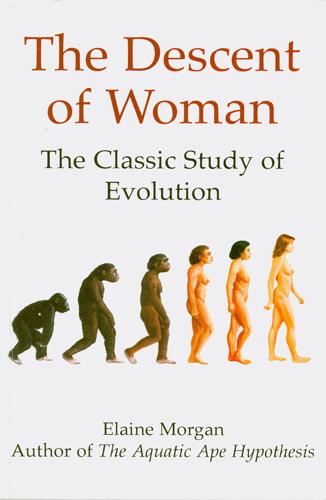
The Descent of Woman
by
Elaine Morgan
Published 1 Feb 2001
If he was a grazer, and the grass was as short as all that, he could never have picked enough blades of it in his trunk in a working day to keep that great bulk going; and if he was (as he largely is) a browser, his mouth wouldn’t need to reach the ground, anyway. When he came to drinking water, he could have waded in, or knelt down—it would have been no more inconvenient than the giraffe’s straddle. Richard Carrington reports: ‘In Africa few rivers are sufficiently deep to cause so large an animal as an elephant to need to swim, and it is customary for the migrating herds to ford them. Sometimes the water will cover the animals completely; they will then walk across the river bed with only the tip of their trunks showing like periscopes above the surface.’
…
London, Peter Davies, 1963. Brecher, Ruth, and Brecher, Edward, eds., An Analysis of Human Sexual Response. Panther Books, 1969. Calder, Nigel, The Mind of Man. B.B.C., 1970. Cannon, Walter B., Bodily Changes in Pain, Fear, Hunger and Rage. 2nd edition. College Park, Md., McGrath, 1970. Carrington, Richard, Elephants: A short Account of Their Natural History, Evolution and Influence on Mankind. London, Chatto & Windus, 1958. Chance, Michael R., and Jolly, Clifford, Social Groups of Monkeys, Apes and Men. Cape, 1970. Comfort, Alex, Nature and Human Nature. New York, Harper & Row, 1967. Darwin, Charles, The Expression of the Emotions in Man and Animals.
…
(See also Pair-bonding); female, 104, 198ff, 210, 249–51; male, 104, 162, 198–201 ff, 214; mother-child relationship (See Children) Bradycardia, 34 Bragg, W, L., 267 Brain, 100, 117, 128, 178; and quasi-race memories, 144–45 Breasts and nipples (breast-feeding), 11, 18, 23, 37–38ff., 59, 228–29 Brecher, Ruth and Edward, 90 Bushmen, 58,115–16, 156,163–64, 167 Butterflies, 241 Buttocks, 18, 55–58 Callicebus, 183 Camels, 51 Carmichael, Stokely, 237 Carpenter, C. R., 182 Carrington, Richard, 138, 142 Catarrhine monkeys, 44 Cats, 83, 92, 105–6, 159–60; hairless, 276 Cattle, 166, 257 Caves, 151 ff. Centripetal societies, 187–90ff. Chance, Michael, 173, 175, 187, 192, 195, 201, 213 Chesser, Eustace, 71 Chesterton, G. K., 117 Chickens. See Poultry Children (babies; infants), 35, 59, 191, 196, 201, 211, 218, 220, 222–33, 254–55 (See also Nuclear family; Pregnancy); and breastfeeding (See Breasts and nipples); food-gathering by Bushman, 163–64; and frowning expression, 47–48,49; love, attachment in mother-child relationship, 96, 104–5, 223–28 (See also Nuclear family); non-human (See specific species); and older women, 251ff.; the pill and women’s choice in having, 258–60ff.; pupil dilation in women seeing pictures of, 145–46, 223–24; webbed toes in 43 Chimpanzees, 45, 47, 61, 97–98, 132, 159–60, 185ff., 190ff., 211; and dominance by display, 194ff., 215; and fear of snakes, 148; and fear of water, 33; mother-young bond, 176–77, 179; and speech, sign language, 112–13, 123–24; and tools and weapons, 15 China, 133 Choukoutien, 133 Cichlids, 256 Clitoris; clitoral orgasm, 71–73, 83–84, 88 Cocks, 203 Coeval bond.
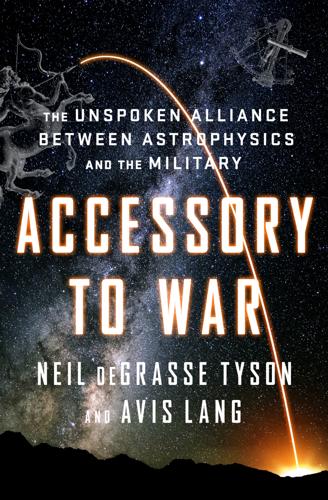
Accessory to War: The Unspoken Alliance Between Astrophysics and the Military
by
Neil Degrasse Tyson
and
Avis Lang
Published 10 Sep 2018
Unbeknownst to nineteenth-century electric telegraph operators and everyone else then living on Earth, the Sun is a giant ball of magnetic plasma that occasionally flares, ejecting blobs of charged particles across interplanetary space. In 1859 the biggest plasma pie in the past five hundred years hit Earth, mysteriously disrupting the world’s newborn telegraph systems. The blast was so intense that it merited a name—the Carrington Event, after the English solar astronomer Richard Carrington, who was the first to observe it. Today, with hundreds of military and communications satellites orbiting Earth, and widespread grids feeding our electrically hungry civilization, we are more susceptible than ever to such a burst. In response, power companies are hardening their electronics at major switching stations, and the European Space Agency, Natural Resources Canada, and America’s National Oceanic and Atmospheric Administration now have teams whose sole job is to monitor and predict space weather.
…
Commission on the Future of the United States Aerospace Industry, 411n on the nature of power, 508–9n Operation Iraqi Freedom, 16, 19, 24 reasons for Iraq War, 336, 515n on space cooperation with China, 376 space policy, 503–4n and Strategic Defense Initiative (Star Wars), 12 Butler, Samuel, 108 Butrica, Andrew, 185 Cabral, Pedro Álvares, 81, 431n californium-254, 402 Cameron, Julia Margaret, 142 camouflage, 125, 172–74, 175, 462n Canada education and life expectancy, 519n and International Space Station, 352, 353, 365, 520n military spending, 353, 519n partnerships with US space program, 353 radar astronomy, 191 space program, 352–54, 520n space spending, 354, 519–20n Canadarm and Canadarm2, 353, 368, 520n Canadian Space Agency, 353, 519–20n Canary Islands, 78, 80, 85, 94 Cañizares-Esguerra, Jorge, 80 Cano, Juan Sebastián del, 88 Canopus (Suhail), 67, 73–74, 434n Cape Bojador, 81, 83 Cape St. Vincent, Portugal, 89 Cape Verde islands, 88 capitalism and innovation, 4, 5–6 Caracol at Chichén Itzá, 42 Carl Zeiss AG, 132 Carl Zeiss Foundation, 132–33, 138–39, 451nn, 454n Carrington Event, 160 Carrington, Richard, 160 Carthage, 70, 73 Cartwright, James E., 531n Cassini, Giovanni, 103 cathode-ray vacuum tubes, 186 Central Intelligence Agency (CIA), 114, 228, 265, 268, 278, 500n CERN (European Organization for Nuclear Research), 326 Certaine Errors in Navigation (Wright), 439n Ceuta (Morocco), 80 chaff, 194–96, 469n Chain Home radar network in Britain, 187–88, 467n Chaisson, Eric J., 227–28, 230–31 Chance Brothers (Birmingham, England), 131, 136, 452n Chandra, Vikram, 54, 92 Chandra X-ray Observatory (NASA), 199, 226 Chaplin, Charlie, 462n Chaplin, Joyce E., 90–91 Chappe brothers, 120 Chappe, Claude, 120–21, 122 Chappe telegraph, 120–23, 124, 446–47nn charge-coupled devices (CCDs), 202–6, 343 charts, maritime in fifteenth century, 82, 84, 87, 89, 436–37n in fourteenth century, 77–78 planar charts, 84, 436–37n in seventeenth century, 84 in sixteenth century, 90 use by Portuguese, 82, 89 see also maps and mapmaking; navigation ChemCam, 242, 389–90 Chernobyl nuclear disaster, 255, 357 China ancient astronomy, 41, 42–43, 49, 421–22nn Beidou system, 337 contact with NASA prohibited, 376 counterspace capabilities, 236, 373, 478–79n early presence of modern humans, 64, 430n education and life expectancy, 519n exclusion from ISS, 366, 373–74, 376–77 Han dynasty view of heaven, 41, 421n kinetic-kill space vehicle, 32–33, 356 military modernization, 373 military spending, 353, 519n most favored nation status, 375 quantum satellite (Micius), 236, 351 rare earth elements, 383–84 research and development spending, 30 as satellite-launching power, 375–76 science and technology degrees awarded, 22 Shenzhou spacecraft, 376, 377 and space power, 318–19, 372–73 space program, 5, 26, 32, 236, 318, 350–51 space-science missions, 351, 518–19n space stations, 318, 375, 376 Strategic Support Force, 373 surveillance in Xinjiang Province, 310, 356, 379 Tiananmen Square protests, 374 trade and diplomacy in fifteenth century, 78–79, 435n US balance-of-trade deficit with, 372–73 as US competitor, 372–76 in world economy, 373, 419n, 525n Xia Dynasty, 43 Churchill, Winston, 190, 243, 265 Cicero, 422n C3I (command, control, communication, and intelligence), 158 Civil Rights Act of 1964, 288 Civil War (American) First Battle of Bull Run, 124, 448n, 449n Fort Sumter, 124 Gettysburg, 126–27, 449nn optical telegraph, 123–28, 447n Signal Corps (US Army Signal Corps) in, 123, 124, 125, 447n, 448–49nn “When Johnny Comes Marching Home Again,” 123 Clark, Alvan, 131, 133, 450n see also Alvan Clark & Sons Clarke, Arthur C., 192, 279, 330, 494n Clausewitz, Carl von, 238, 240, 479n Clementine lunar probe, 26 Clement IV (pope), 106 clepsydras, 40 climate change, 14, 388–89, 414n Clinton, George, 113 clocks, development of, 40 CNN, 7, 19, 341 Cockburn, Andrew, 411n, 485n coherence, 242 Cold War aerospace industry consolidation after, 11, 411n buildup of US military strength, 267 end of, 358, 368 particle physics benefit from, 29 Strategic Defense Initiative and, 250, 252 Collier’s magazine series on space, 366, 523–24n collision cross-section, 401–2 Colorado Springs, Colorado, 16, 17 Columbia University’s Center on Capitalism and Society, 4 Columbus, Bartholomew, 86 Columbus, Christopher books, charts, and navigation aids used, 48, 86–87 eclipse used as threat, 48–49 first voyage across Atlantic, 85–86 fourth voyage across Atlantic, 48–49 pelican sightings, 65, 431n propositions to sponsors for funding, 85, 86 voyages to Iceland and Ghana, 85, 437n comets organic material from, 207 Tempel 1, 207–8 water in, 384, 386 Commission on the Future of the United States Aerospace Industry, 318, 411n Commission to Assess United States National Security Space Management and Organization, 11–12, 21, 323, 393, 395, 493n Committee of Public Safety (France), 121 communications satellites Arthur C.
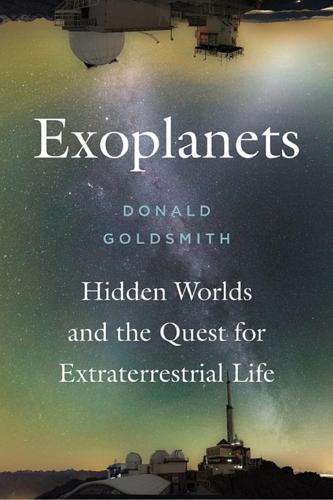
Exoplanets: Hidden Worlds and the Quest for Extraterrestrial Life
by
Donald Goldsmith
Published 9 Sep 2018
In the middle of September 1770, bright auroral displays appeared around the globe for nine consecutive nights, as streams of charged particles from a solar CME, guided by the Earth’s magnetic field, encountered atoms high in the atmosphere.4 Unlike almost all such displays, which last for only one or two nights, the 1770 auroras testify to an immense and long-lived solar outburst, perhaps one even more powerful than the mighty solar CME that produced the better-known “Carrington event” in September 1859. Named after the astronomer who actually saw the solar eruption that sent charged particles toward the Earth, the Carrington event generated auroral displays as far south as Cuba, some of which were so intense that many people believed their cities to be on fire. The flood of fast-moving charged particles also disrupted telegraph communications (the “Victorian internet”) around the world.5 Today a Carrington-like event would wreak havoc to the tune of $2 trillion (according to an estimate by the National Academy of Sciences).
…
(The astronomer Courtney Dressing has remarked that if civilizations exist on planets like these, the astronomers could live happily on one half, with everyone else on the other, beach-y side.36) Also, the K2 spacecraft observed a flare from the star equal in energy output to the terrestrial Carrington event described in Chapter 12, which could pose serious danger to any of these civilizations. Because the TRAPPIST-1 observations extend over only a few years, in comparison with the centuries on Earth that recorded a single comparable event, its flare confirms astronomers’ knowledge that M stars often undergo extremely energetic outbursts that would threaten danger to life on any planets close to these stars.
…
See Atacama Large Millimeter Array Alpha Centauri, 10, 19–20, 43, 183, 208 Aluminum, 137, 153 Ammonia, 161–62 Anaxagoras, 124 Andromeda galaxy, 208 Angel, Roger, 195 Ariel (Atmospheric Remote-sensing Infrared Exoplanet Large-survey), 186 Arrhenius, Svante, 124 Asteroids, 16, 21, 54, 63, 136–39, 218–23 Astronomical unit, 21 Atacama Large Millimeter Array (ALMA), 48, 142–44, 147, 196, 202 Atmospheres of exoplanets, 42, 60, 106–7, 172, 181, 185 composition of, 107, 172, 181, 185 heat trapping by, 42 observation of, 60, 106 Baikonur Cosmodrome, 51 Barnard’s star, 20 Batygin, Konstantin, 22–23, 139–40 Beaulieu, Jean-Phillipe, 81 Beta Pictoris, 71 Binary star systems, 96–97, 146 Biosignatures, 158, 171–73, 192 Borucki, William, 51, 53 Boss, Alan, 31 Boyajian, Tabetha, 92, 95 Brown, Michael, 22, 139 Brown dwarfs, 41, 69, 82 Butler, Paul, 2, 32 California-Kepler Survey (CKS), 129 Campbell, Bruce, 31 Carbon, 106, 153 Carbon dioxide, 106, 137, 162, 164, 172–73, 199 Carbon monoxide, 60, 72, 137 Carrington event, 123, 168–69 Cassini spacecraft, 164 CCD detectors, 108 Center for Astrophysics, 46, 109, 157 Center of mass, 15–19, 37, 43, 96–97 Cerro Pachón, 72–73 Charbonneau, David, 55 CHEOPS (CHaracterising ExOPlanet Satellite), 125–26 Chu, Stephen, 212 Copernican principle, 32 Coronagraphic mask, 69, 72–73, 182, 190–93 Coronagraphy, 69–71, 205 CoRoT spacecraft, 53–54 Dark energy, 10–11 Dark matter, 10–11 Deep Space Industries, 222 Discovery Channel Telescope, 48 Domagal-Goldman, Shawn, 174 Dominion Astrophysical Observatory, 31 Doppler, Johann, 30 Doppler effect, 30 Doppler tomography, 109 Draugr, 26 Dressing, Courtney, 123 Dust, 54, 68, 72, 90, 94, 97, 106, 115, 135, 137, 139, 143–47, 151, 159, 172, 204, 210–11 Dyson, Freeman, 94, 212, 224 Dyson sphere, 94 Eccentricity, 35–38 Eclipse, 75, 96, 173 Einstein, Albert, 8, 74–82, 205–6, 214–17 Einstein ring, 76, 205–6 Electromagnetic radiation.
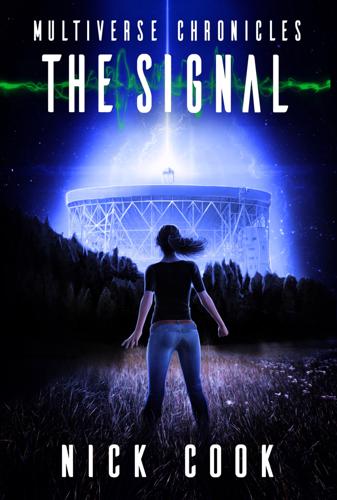
The Signal: Watch Out for the Darkness
by
Nick Cook
Published 11 Jul 2018
‘And there was me thinking the signal was just disrupting the mobiles around here,’ Steve said. ‘If it were, we wouldn’t be taking this as seriously as we are. Now we need answers and we need them quickly.’ Graham tapped his fingers on his chin. ‘Could this all be down to some sort of solar flare activity on the scale of the Carrington Event back in 1859, which knocked out much of the telegraph network?’ ‘You know your history,’ Kiera replied. ‘I should hope so. Astronomy is my job after all.’ I managed to hold back a smile as Steve’s nose twitched. Kiera narrowed her gaze at Graham. ‘A major solar flare was our first assumption too.
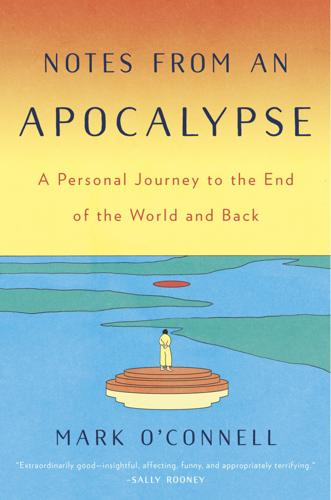
Notes From an Apocalypse: A Personal Journey to the End of the World and Back
by
Mark O'Connell
Published 13 Apr 2020
There was the prospect of hackers, motivated by political aims or pure demonic mischief, unleashing a virus on the systems that controlled the national grid, taking out society’s entire technological infrastructure. There were the massive solar flares that occurred periodically and could just as easily do the same thing without need of human agency. He was fond of mentioning the so-called Carrington Event, a massive eruption on the surface of the sun that had occurred at the turn of the last century and caused the breakdown of electrical systems across the world. It wasn’t a big deal back then, of course, for the simple reason that we didn’t yet have much in the way of electrical systems, but how much worse would it be now, at a time when the wipeout of the grid would mean the near certain collapse of the complex structures undergirding our world?

The Last Stargazers: The Enduring Story of Astronomy's Vanishing Explorers
by
Emily Levesque
Published 3 Aug 2020
The images we see must be accurately recorded and preserved in some way, and the methods for doing this have evolved over time. Before photography became widely practiced, eyeballing and hand sketching really were the best means of gathering astronomical data. Solar astronomy still references some excellent drawings of sunspots by Richard Carrington from 1859, and one of my research students once tracked down the first recorded reference for a stellar eruption etched into a seventeenth-century globe. Still, by the time Hale’s telescopes came along in the early 1900s, we had long since moved on from peering through eyepieces and sketching what we saw to the most modern technology that could be had: photographic plates.

The New Gold Rush: The Riches of Space Beckon!
by
Joseph N. Pelton
Published 5 Nov 2016
And, there is an even bigger threat, in terms of likelihood of occurrence, and that is coronal mass ejection. Today’s modern economies and patterns of employment have created a world that is increasingly dependent on access to electric power grids, application satellites and other vital infrastructures vulnerable to a solar storm like the Carrington event that occurred in 1859. At that time the Carrington telegraph offices were lit on fire and the northern lights were seen as far south as Cuba and Hawaii. A repeat of this event today with trillions of ions traveling at a reasonable fraction of the speed of light would have blown out electrical transformers, crippled satellite networks, and disabled vital infrastructure across the planet.

A Hunter-Gatherer's Guide to the 21st Century: Evolution and the Challenges of Modern Life
by
Heather Heying
and
Bret Weinstein
Published 14 Sep 2021
We will navigate through the fog, and we will not have a blueprint. We must start now. We can’t wait until the hazard is so clear that we all agree—then it will be too late. We are in the throes of a sustainability crisis. One thing or another will take us out. It might be climate change, or a Carrington Event, or a nuclear exchange set in motion by wealth inequality, a refugee crisis, or revolution, to name just a few of the awfully real possibilities. We are hurtling toward destruction. We must, therefore, with full consciousness, embark on something dangerous. We must seek the next frontier: the event horizon, beyond which we cannot see, from which we cannot return, but through which may be our salvation.

Practical Doomsday: A User's Guide to the End of the World
by
Michal Zalewski
Published 11 Jan 2022
In principle, however, an ejection could be powerful enough to create a significant electromagnetic field gradient across the surface of our planet, inducing stray voltages and currents in electrical wires. Historical records of CMEs are sparse, in part because the use of electricity is a relatively recent phenomenon, but one documented solar storm of 1859 wreaked havoc on telegraph systems around the world. It’s widely expected that another severe CME could happen in the near future—various researcher groups estimate the odds to be from 1 to 10 percent per decade.18 If one does occur, the damage would probably be much worse than 150 years ago; that said, the impacts, although potentially dire, are also easy to overstate.

Sunfall
by
Jim Al-Khalili
Published 17 Apr 2019
Your scenario will only work if the CME is moving in a straight line from the Sun, but if it spirals in from a slight angle, as it can do, then an e.m. pulse would be much less effective.’ Deep down she felt the whole enterprise was futile. Defending Earth against a really powerful CME with electromagnetic pulses would be like standing in torrential rain and trying to stay dry under a cocktail-stick umbrella. The CME that caused the great solar storm of 1859 or the near miss of 2012, which – had it been ejected nine days earlier – would have met the Earth full on, frying the world’s electronics and bringing much of human civilization to a halt, would both, if they struck today, be catastrophic. With the magnetosphere in its current sorry state, civilization on Earth wouldn’t stand a chance.